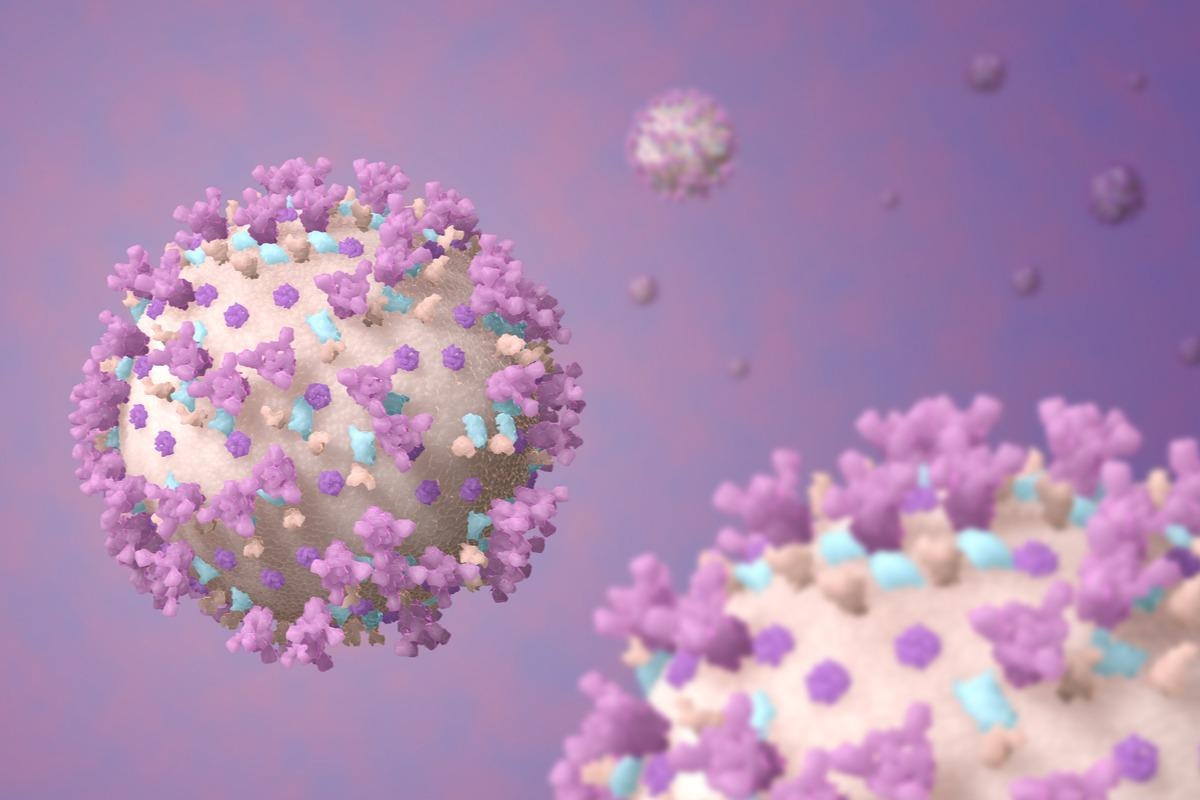A recent study posted to the bioRxiv* preprint server assessed the role of the severe acute respiratory syndrome coronavirus 2 (SARS-CoV-2) Omicron spike H655Y mutation on viral entry pathways.
 Study: SARS-CoV-2 Omicron spike H655Y mutation is responsible for enhancement of the endosomal entry pathway and reduction of cell surface entry pathways. Image Credit: MedMoMedia/Shutterstock
Study: SARS-CoV-2 Omicron spike H655Y mutation is responsible for enhancement of the endosomal entry pathway and reduction of cell surface entry pathways. Image Credit: MedMoMedia/Shutterstock

 *Important notice: bioRxiv publishes preliminary scientific reports that are not peer-reviewed and, therefore, should not be regarded as conclusive, guide clinical practice/health-related behavior, or treated as established information.
*Important notice: bioRxiv publishes preliminary scientific reports that are not peer-reviewed and, therefore, should not be regarded as conclusive, guide clinical practice/health-related behavior, or treated as established information.
The SARS-CoV-2 Omicron variant of concern (VOC) has several mutations in its genome, especially in its spike (S) protein, which have been found to increase its transmissibility. However, extensive research is required to understand the impact of these mutations on the various aspects of Omicron infection.
About the study
The present study investigated the function of the SARS-CoV-2 S protein H655Y mutation on the three SARS-CoV-2 Omicron VOC entry pathways dependent on metalloproteinase, transmembrane serine protease 2 (TMPRSS2), and cathepsin with B and L cysteine proteases.
The team obtained Vero E6, lung carcinoma 3 (Calu-3), human ovarian clear cell carcinoma (OVISE), Vero E6-TMPRSS2, and cancer coli 2 (Caco-2) cells for the study. SARS-CoV-2 was propagated in the VeroE6-TMPRSS2 cells, and the viral titer was determined using a plaque assay. The study also derived synthetic deoxyribonucleic acid (DNA) correlating to the S gene of SARS-CoV-2 wildtype (WT) strain, Omicron VOC, and the chimeric S gene. Furthermore, S protein expression vectors were constructed.
The infection assay was performed on viral particles that were pretreated with inhibitors, and its luciferase activity was evaluated. Quantification of intracellular SARS-CoV-2 ribonucleic acid (RNA) was then executed by detecting the viral RNA by quantitative polymerase chain reaction (qPCR). The team also performed western blotting using primary and secondary antibodies. This was followed by immunofluorescence analysis by incubating the cells with primary antibodies and anti-SARS-CoV-2 nucleocapsid (N) protein.
Results
The study results showed that the three protease inhibitors tested, namely nafamostat, marimastat, and (2S,3S)-trans-Epoxysuccinyl-L-leucylamido-3-methylbutane ethyl ester (E-64d), specifically blocked the SARS-CoV-2 entry pathways dependent on TMPRSS2, metalloproteinase, and cathepsin B/L. In the Calu-3 cells, intracellular RNA replication post-SARS-CoV-2 WT infection was significantly blocked by nafamostat, while no such effect was found in E-64d or marimastat. This showed the predominant dependence of the WT strain on the TMPRSS2 pathway.
Furthermore, the study found that E-64d and marimastat could effectively inhibit viral infection in the human endometrioid adenocarcinoma (HEC50B) cells while nafamostat could not produce the same effect. This indicated that the WT strain caused infection of the HEC50B cells by both metalloproteinase and endosomal pathways. Also, the high sensitivity of the OVISE cells towards E-64d treatment against infection showed that the endosomal pathway was the primary point of viral entry in the OVISE cells.
Viral titers showed that in comparison to the WT strain, the replication of the Omicron VOC was decreased in the HEC50B and Calu-3 cells that use metalloproteinase or TMPRSS2 pathways. However, the OVISE cells showed similar replication of WT and Omicron, which mainly use the endosomal pathway. Overall, these results indicate that a significant difference exists between the viral entry mechanism used by the WT strain and Omicron VOC.
Evaluation of the three protease inhibitors in different cell types showed that in the HEC50B cells, the SARS-CoV-2 Delta VOC was less sensitive to E-64d, while the WT and Omicron infections were effectively inhibited. While, in the same cells, WT and Delta infections were significantly inhibited by marimastat, a similar effect was not found against the Omicron VOC. Moreover, the Omicron VOC was more dependent on the endosomal pathway than the WT and Delta strains, indicating that Omicron primarily depends on the endosomal pathway for viral entry.
The study also found that the Omicron VOC preferred the endosomal pathway even when the other pathways were present in the cells targeted for infection. Also, the Omicron S protein was found to favor the cathepsin B/L-dependent endosomal entry pathway compared to the other two pathways. Moreover, no significant correlation was observed between the dosage and the effects of nafamostat in the Calu-3 cells when the Omicron and other VOCs were compared. The study also indicated that the Omicron VOC and the WT strain use the same entry pathway when the infecting cells have only one pathway.
Moreover, a reduction in syncytia formation via the TMPRSS2 pathway was observed in Omicron, which indicated lower pathogenicity via this pathway. Also, the WT strain used metalloproteinases in syncytia formation in HEC50B cells.
Conclusion
The study findings showed that the SARS-CoV-2 Omicron VOC favored the usage of the endosome pathway compared to the cell surface pathways used by the SARS-CoV-2 S protein H655Y mutation. The researchers believe that this study can help understand the biological and pathological characteristics of the Omicron VOC and other emerging VOCs, thus facilitating novel treatment options for COVID-19.

 *Important notice: bioRxiv publishes preliminary scientific reports that are not peer-reviewed and, therefore, should not be regarded as conclusive, guide clinical practice/health-related behavior, or treated as established information.
*Important notice: bioRxiv publishes preliminary scientific reports that are not peer-reviewed and, therefore, should not be regarded as conclusive, guide clinical practice/health-related behavior, or treated as established information.